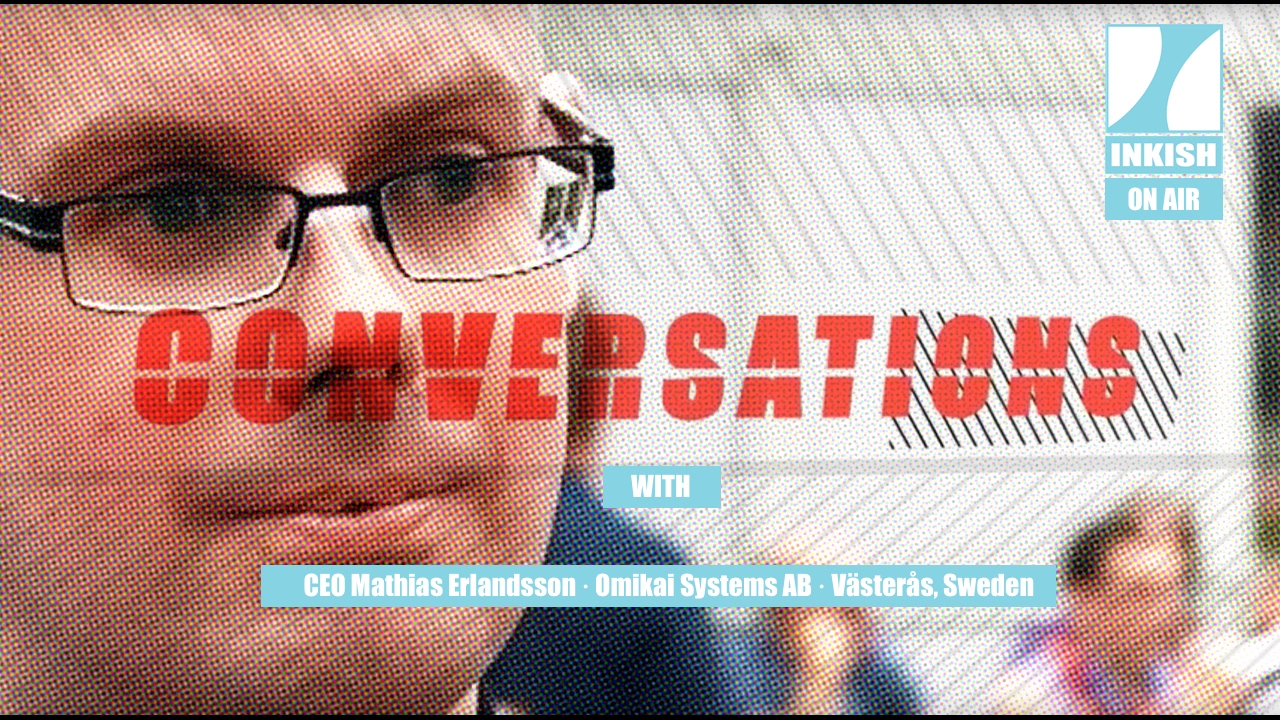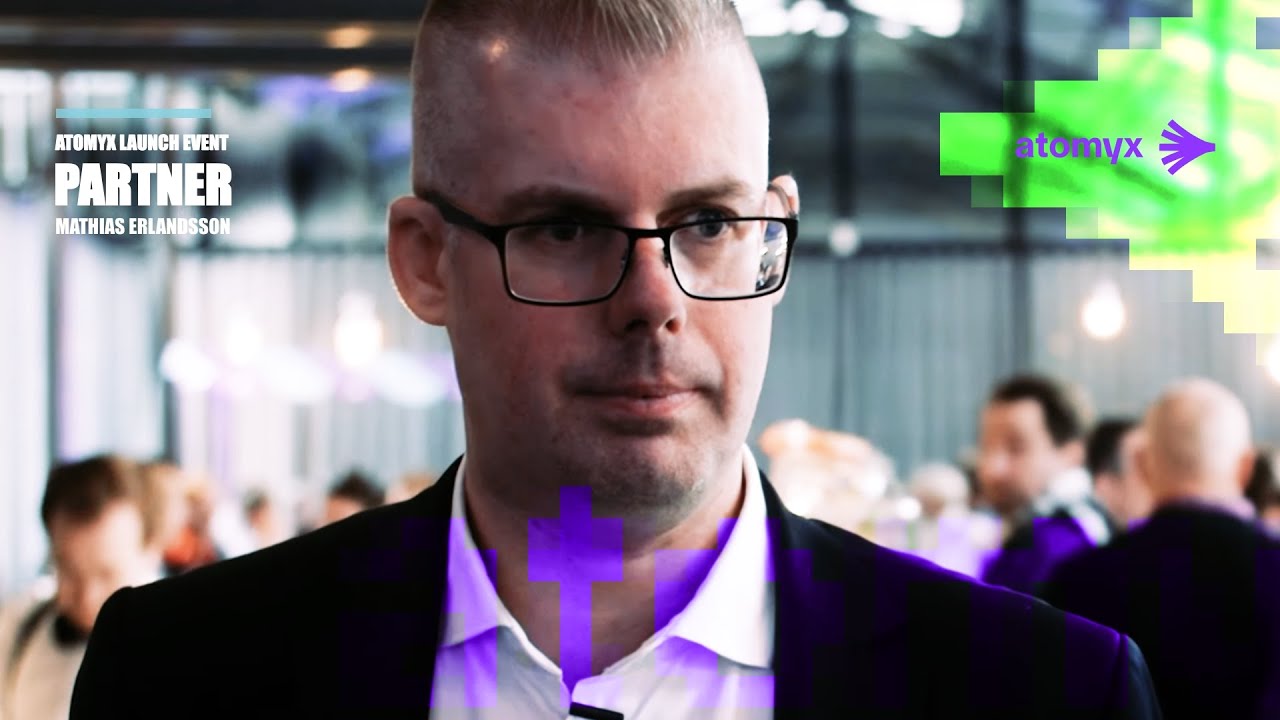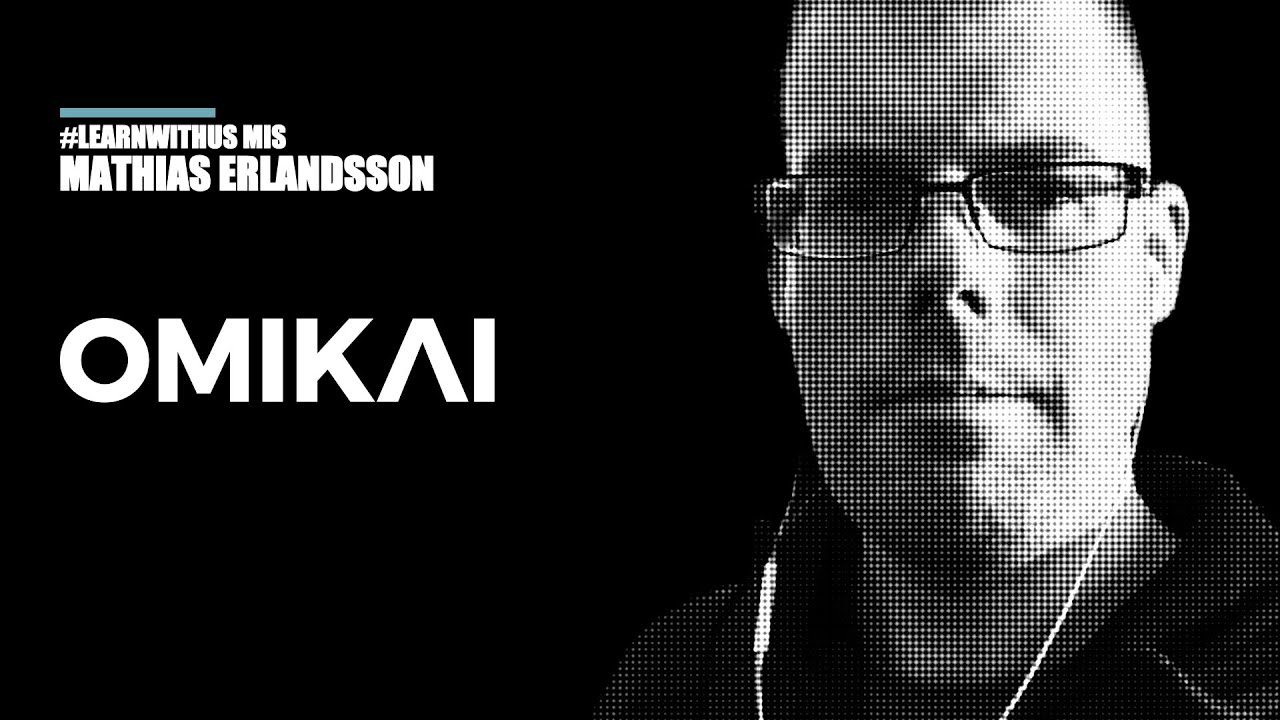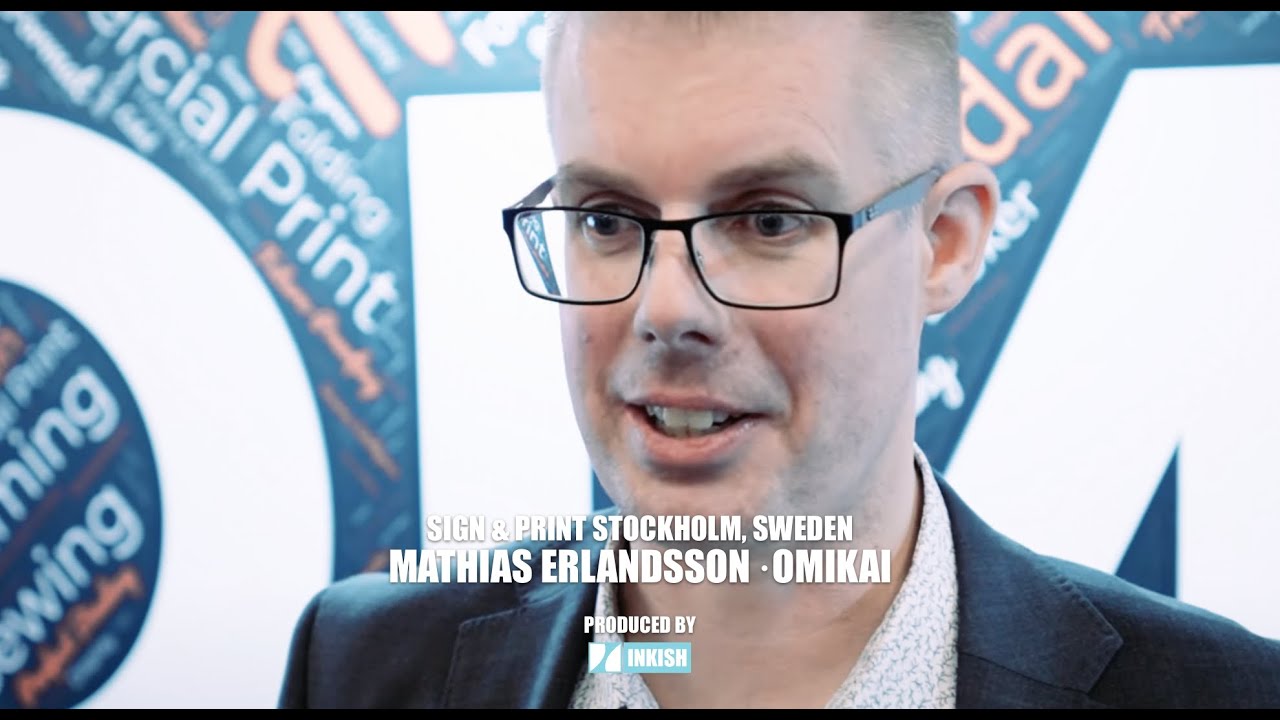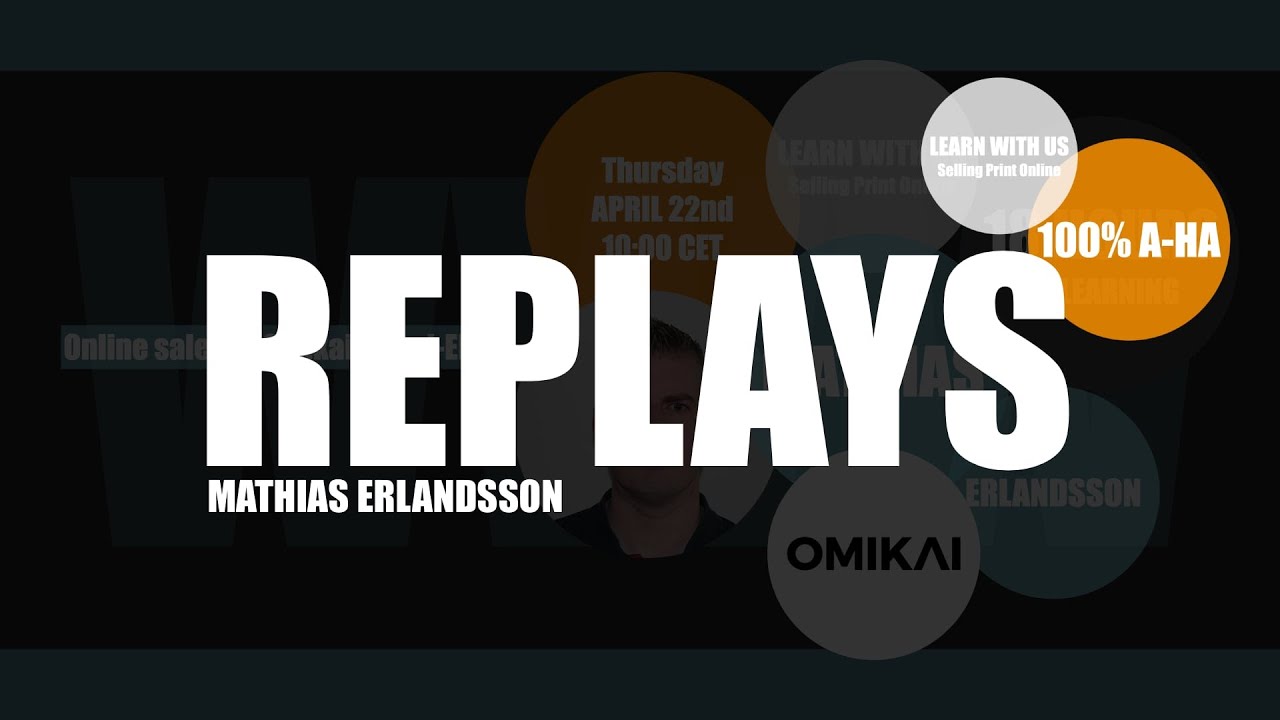INKISH.TV proudly presents: CEO Mathias Erlandsson · Omikai · Västerås, Sweden
Mathias Erlandsson is not just the CEO, but he is also the founder and developer of a completely new and groundbreaking MIS/EPR system for the printing industry. We met him at DRUPA and had an open chat about Omikai, the market and the challenges bringing new software to the market. What we really like about the your entrepreneur is that he and his company aim to make a standard one-size fits all software solution – and not only have customers embraced this strategy, but also investor and chairman of the board Thomas Petersson praised the strategy at the recent Grafkom I/O. See the interview here: http://www.inkish.tv/Episode.aspx?vid=a7XwCDBa61Q
0:18 Omikai is a combination of two words. “Kai” from Japan, meaning “results” and Greek “omi” is short for omni, meaning “for everybody” – so “results for everybody”.
0:26 Omikai develop MIS solutions for the printing industry with an objective “one size fits all”.
0:31 Omikai is a one-click installation/SAAS service.
0:35 Omikai can be used with other IT solutions like ERP, transport systems, CRM, web-to-print, etc.
0:40 Omikai is four years old and have solutions live in the market now.
0:46 I know that – Well, at least I believe that what you have done with your company is that you have tried to make pricing of printed products easier to do?
0:56 Easier, also and standardized.
1:00 So, what does it mean standardizing a pricing?
1:03 Because, we differ ourselves from other companies.
1:06 In what way?
1:08 There is a standardized product, and everything we do is coming to every customer.
1:13 Okay. So, you have like, instead of having a solution that is altered for very expensive cost –
1:20 Yes. And a lot of consultant hours. So, we don’t have that here.
1:22 Yes. You basically say that, we develop, and then we deliver the full package to the printer, and then they can use whatever they want?
1: 29 Yes. So, it”s a one-click installation. If they come to us, we press the button, and they can start working right away in a standard software. And, we”re continuously developing the software more and more, and everything we developed is for everybody.
1:43 You select the printing business as your niche, so you can make – because the needs for printing houses are more or less the same?
1:50 Same in all over the world. So, it’s a consolation, standardized, it”s easy to setup, and it’s available, and they’re also usable for everybody in the whole world.
2:02 That”s good.
2:03 That”s good. Yes.
2:04 And, I mean, you started four years ago, are you programming it yourself?
2:09 From the beginning, yes. But, I don’t do programming right now. But, from the beginning, I am. Civil engineering and computer science.
2:16 And, any relation to the printing industry or was that just -?
2:21 It was my colleague”s fault. I work with a lot of industries, have been everything you can find up. But, I found a colleague, and we teamed up.
2:34 Who was your colleague or who is your colleague?
2:36 He”s called Bank. And, he”s our guru in the printing industry.
2:41 Okay. So, he knows a lot about the printing business, and how to calculate prices.
2:47 He, more or less know how it works, and I know how to put it into the software.
2:53 So now, the next challenge – I mean, is the software available now?
2:58 Yes, it is. It is. It”s available, and we have a table of customers all over the northern countries right now, and we’re expanding with new owners, also in the company.
3:11 Okay. So, is it like active investor that has been or is it a passive investor that you have got?
3:16 Active.
3:17 I guess that it”s pretty impressive that in four years, you have developed a software, you have got it into market, and even being attracted to investors. I guess that investors, that”s needed if you want to be a global player around?
3:32 Yes. The first three and a half years was to prove ourselves, to get our customers, and to get the software out there running. And then, the next step now is to go global, and for that we need investors. We need the time and money and knowledge about how to do that.
3:48 If you have a software – I mean, would it be wrong to call it an MIS system, just to put it like in a box or is it an MIS system or how do you -?
3:56 It”s both. It”s an MIS system, but together with partners, we have a European system together.
4:02 So, the one-click installation, is there Omikai, then you have like, you can add it to some financial systems. Do you have that functionality?
4:11 We have a lot of integrations. Integrations with financial systems, with transport systems, with pre-press flows, and the machines, and so on and so on.
4:19 So, are you saying that, if people buy Omikai because it’s a great MIS system, you can actually tailor made so if some people or some companies like this ERP system, they can use that, and if somebody else like this pre-press system, they can use that, and if somebody’s using that transportation management system, they can use it? So, you can build the best of all the world?
4:44 Yes. And, I think it’s a good opportunity also, because the accounting system, the transport system differs between each country. So, it”s good that we have the basics in the MI system, and we can integrate it with the local software, that is us.
4:59 Yes. That is cool, because I mean, in every country have its own favorite, right, for basic finances. Because, there”s I mean, tax regulations and VAT and very different.
5:08 Very different, in many countries.
5:10 So, basically, rather than trying to fit into one ERP system, you have actually made, the graphical part of it that you have made – can you use Omikai without any of these things?
5:23 Yes, you can do that. Of course. But, we put everything into this, it’s the same all over the world, in one system. And, it”s CRM. It”s the MIS planning, purchasing, preparing transports, and invoicing. But, the rest, we have partners for, local partners.
5:42 I was just wondering, because if you do the MIS system, obviously the knowledge about how you make the calculation basics. I mean, you know that you have the variable cost, and you have the fixed cost, and you have the parts of the financing. You know all these kinds of things, right?
6:03 Yes. That should do it.
6:04 I was just wondering, is that something that is difficult to make, choosing the software that is easier to than used as the user? Because, I’ve been working in a printing house, and I think that – I will not name any solutions, but I think they suck. I really think that most ERP systems trying to be an MI system, they really suck. Because, they’re so complex, and there”s so many things that could be taken for granted. I mean, if I asked for a 16-page Hafele brochure 4 plus 4, why should I consider which paper should be imposed to, and why should I consider whether you want a long grain or short grain direction paper. I mean, I’m just asking, because, I mean as a sales person – I used to be a sales main in printing. I was in Denmark. And, I just thought that, “Okay. It is actually obstructing the process for me to use an ERP-based MIS system for pricing, because it was like, a lot of technical information that really didn’t add value to the end process. Is that something that you have changed?
7:12 The problem for us was, either you have systems that are focusing on one type of production, and they’re very good at that. Only offset or only that or only that. Or, you have the complex systems that you can configure with consultant hours, configure to work with the entire flow. But, for us, it’s a problem to standardize everything in a scalable standardized product that we have sold in a very good way, so we can have the architecture that work for all the types of production.
7:46 So, just to see if I understand you right. Does that mean that when you make a calculation in a system, it is based on template or how should I understand it?
7:57 It’s based on the basic parts like a sheet or a folder or some kind of some kind of something, and then we build templates of that.
8:07 So, you have like a range of – For example, if you have dib, so that you have clicked prices, and if you have a paper, you have different sizes of sheets or a kilo price or whatever. I mean, so you build the product, and then you can create a template based form that choice, and then you can use that template for the next time you have a similar product?
8:24 Or a basic template for a quotation. We make a quotation based on the template, and then it can change everything in the quotation. But, the template makes it fast to do the quotation. You’re making a quotation in seconds, but you can even change things to a more specific quotation for a customer. So, the templates is doing good work.
8:48 That”s great. I guess also, that makes it easy if you want to integrate with a web-to-print solution, because they don”t have like template-based pricing. So, rather than having a price and template in the web-to-print solution, you can use the templates that you -?
9:01 Yes, of course.
9:02 And, are you using a standard API that you”re offering for this price?
9:06 Yes, we are. And, we’re trying to standardize the integration with the web-to-print systems, also. It’s not really easy, because there are a lot of it with WIN systems, but we are fighting to standardize it. And yes, as I said to you, we have the templates, and they”re going to be added to our group”s categories, and the categories and the products are available in the web-to-print system. So, it”s cool.
9:31 So, where do you see – I mean, you have now been in existence for four years, so where do you see your company in let”s say, one year? Maybe next drupa, because that”s in three years. Are you having a booth inside or outside next year?
9:46 Probably, we”ll have it inside next year.
9:48 Probably, you”ll have it inside next year. Okay.
9:49 Yes. So, in four years or something.
9:52 Three years.
9:54 So, it”s three years now? It”s in 2019. They”re shortening the period. We”re going to have it inside, an inside booth. We’re going to have active customers in all of Europe, and we’re going to continue.
10:09 Also, you have a lot of ideas in pipeline, both from the customer side, but also from your own knowledge?
10:15 Our ideas, of course. We got the ideas from customers also, just to put everything together and find the generic standardized solutions to solve many customer”s demands in one solution. So, it”s a puzzle.
10:28 I met our joint – It”s not a client, but it”s my media darling, Ginny Holmen from Horace Book Greenery. I met her just a little bit earlier today, and asked. Of course, I asked. I had to ask her about it. She said that, “We have closed, but we still have some developments.” So, that means that when she said that she has a development in progress, that development will actually not just benefit her, but will benefit all Omikai clients?
10:53 Yes. All the development we’re doing is benefitting everybody. And, she had specific implementing needs. So, we”re taking all this implement act, and make it available for everybody.
11:07 Does having the solution as a cloud based solution, I think, I mean, if I have the nay hat on, right? I would say that, as a printer all my data are so critical, so having them in the cloud based solution, have you had any experiences with people commenting on having -?
11:31 We thought it”s going to be more than it was, but all the people have the money in the cloud, and they”re using cloud for everything, nowadays. So, the stake was less and less.
11:44 What I was just thinking. Now, I have today”s 35 jobs lined up for printing, and then my internet operated by accident caught the wire to the internet at my printing house.
12:00 Then, you take out your cell phone, and you have 4G. You can run it, anyway.
12:04 He”s from Sweden. They have 4G phones.
12:07 Or 3G in the rest of the world.
12:09 3G. They don”t even have that in mine.
12:11 And GSM in the rest of the world.
12:17 Well, that was nice to you Mathias. And, the next time we meet, it will definitely be before, because we run into each other quite often, right? And, I’ve said to you many times, I want to come and see you, and get to know your business. Listening is one thing, but seeing and –
12:37 It’s not same. You want the feel of it, and you want to touch it and see it in action.
12:40 I think it would be difficult to sell, like a soft touch lamination just by words, right?
12:45 Very hard, very hard. You have to feel it, you have to touch it, smell it, taste it.
12:51 So, that”s great.
12:53 Yes. Nice to meet you.
12:4 Nice to meet you too.
































































